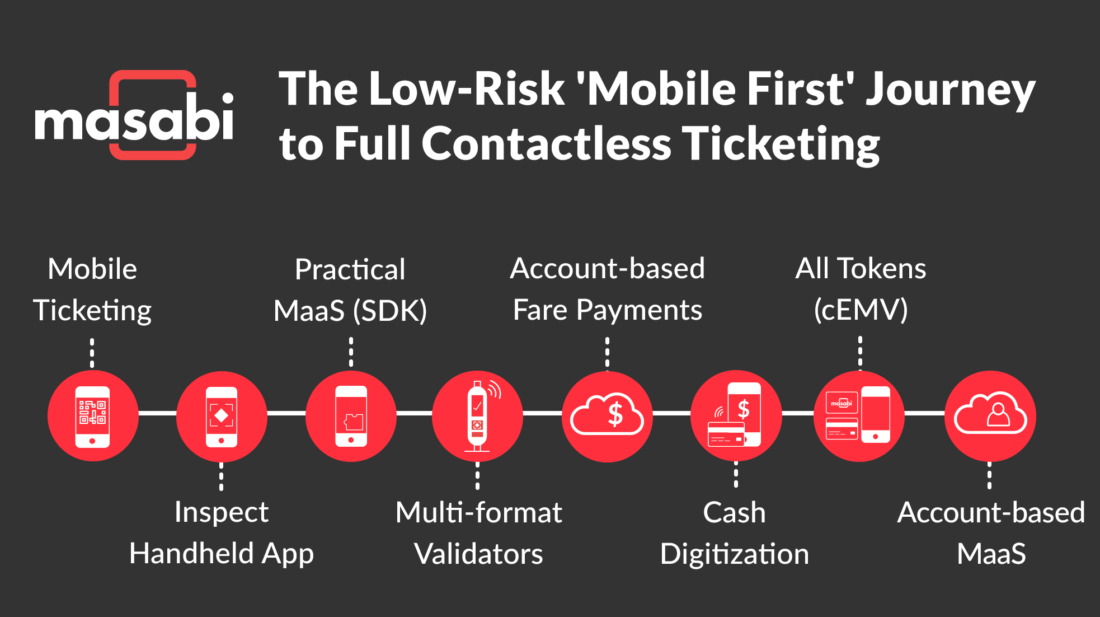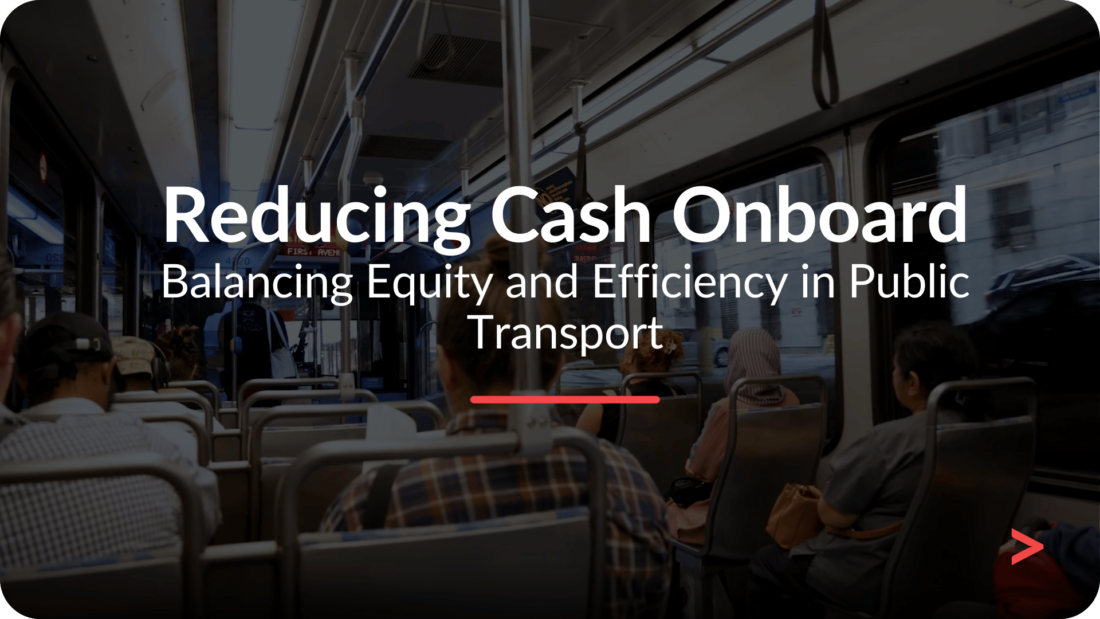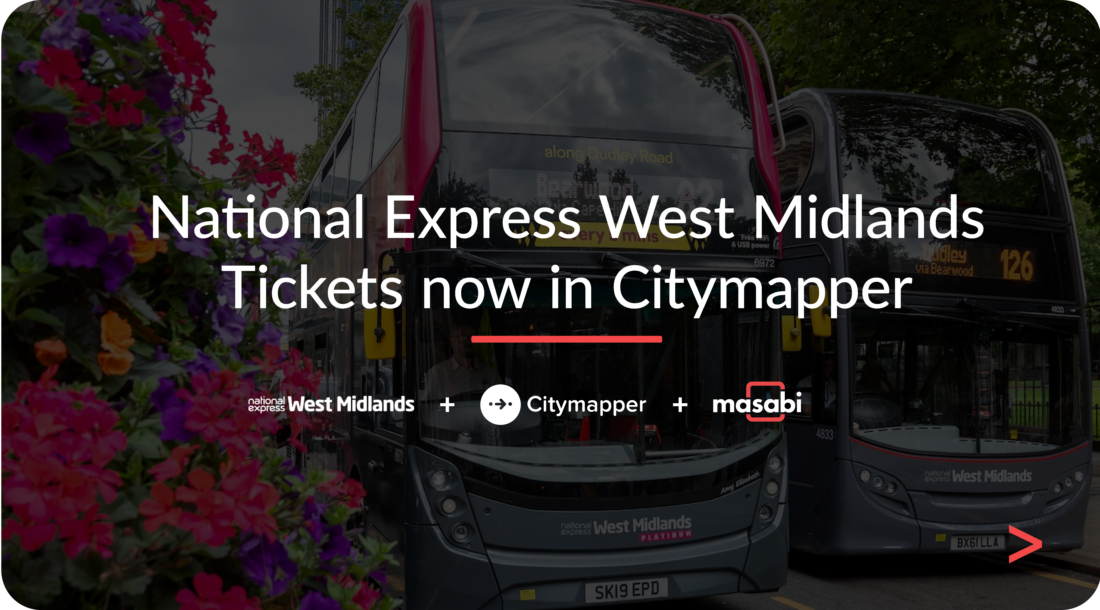
The 7 Step ‘Mobile First’ Approach to Deploying a Contactless Fare System
But deploying a reliable mobile ticketing system is just the beginning. In this post, we run through a short 7-step guide to move agencies to a fully contactless fare system following a BYOT setup, enabling organizations to save money, deliver equity and improve the passenger experience.
This is a flexible journey: you may do all seven steps at once, enter at step 3 or 4, or skip a step. It is also true that every transit system is different. If you would like to discuss your fare collection setup with our expert team, we can provide more specific advice based on your infrastructure, pain points and objectives.
1. Mobile Ticketing LIVE in Weeks
Mobile ticketing is available to transit agencies and operators around the globe, no matter their size, via a ‘fixed monthly fee’ or ‘percentage of fare revenue’ model. It is also extremely quick to deploy. Masabi’s Justride platform offers swift, simple migration from any existing mobile ticketing system, usually completing the process in a matter of days days. Masabi deployed Fire Island Ferries just 23 days after the contract signature, SW Transit in 20 days and National Express in only 7 weeks.
Mobile ticketing does not require any capital expenditure or hardware, and can run alongside existing fare collection systems. Often mobile ticketing is deployed using a visual digital ticket inspected via drivers or inspection staff, or upgraded to a scanned solution using validation devices or validation apps.
2. Validation
Once you have a successful mobile ticketing deployment, the next stage is validation and adding in a foolproof way of ensuring any fare evasion is minimized. Today, mobile barcodes are the most accepted way to deliver contactless mobile ticketing, as it works on all smartphones with a simple app download and does not require any changes to Sim cards.
Despite the use of barcodes, it is worth noting that validation devices should be multi-format to enable multiple technologies to scan, giving flexibility on future ticket formats and ensuring you do not lock out innovation. Validators are becoming more and more cost-effective for organizations of all sizes, and Masabi has experience bringing off-the-shelf and customized solutions to cities around the globe.
3. SDK Integration
The availability of the Justride SDK, the world’s first mobile ticketing SDK for public transport, means you can now integrate the market-leading mobile ticketing platform into existing or new applications. This enables riders to buy tickets from multiple applications within an urban ecosystem. The SDK is currently live with more than 70 transit agencies in 5 countries.
An agency-branded mobile ticketing app may well be the best option for commuters and regular riders, but for people visiting a city or using a journey planning or MaaS app to navigate to a new destination, the ability to seamlessly purchase tickets from the same application gives better accessibility and choice for passengers. It also removes the barrier of having to figure out how to buy a ticket. In our view, because this approach gives passengers more accessibility and choice it will help increase public transit ridership.
4. Account-Based Ticketing
Account-Based Ticketing ushers in a new level of convenience for riders, eliminating the need for pre-purchasing tickets. All a traveler requires is an active account from which the journey cost is deducted after travel. This system further simplifies the experience of using public transit.
Passengers can now leverage a mobile barcode tied to a stored value account to scan their way onto public transportation services and Justride.
5. Enabling Fare Capping
Fare capping rewards all riders for traveling by automatically providing ‘period passes’ based on how much they ride/spend over periods of time without needing to purchase them upfront. With fare capping, transit agencies democratize access to transport and deliver social equity for all passengers by removing the cost barriers associated with paying upfront for a period pass.
6. Adding Other Fare Media
Once Account-Based Ticketing is operational you can add in other tokens such as contactless credit/debit card and closed-loop smartcards. Masabi’s Justride platform supports family accounts meaning that a primary account can cover the travel expenses of other family members whose travel tokes are linked to this primary account. Our platform caters to both pre-pay and account-based fares and multi-format tokens, meaning people can choose whichever is best for them. As people use the ticket machine in their pocket or the ticket already in their wallet, agencies can reduce proprietary tickets over time and save card issuance and cash handling costs.
7. Enable the Unbanked
Transit agencies worldwide need to provide public transit solutions for all, including those without a bank account. Agencies can collaborate with retail shops to convert cash into digital credits, which can then be loaded onto mobile accounts. Masabi’s account-based system facilitates this type of transactions, exchanging cash for digital credits that are loaded to the riders’ account. This inclusive approach ensures everyone can benefit from and access public transit, regardless of their banking status.
Conclusion
At Masabi, our primary objective is to create seamless riders experiences while reducing costs and increasing operational efficiency for agencies of all sizes around the globe. We accomplish this by enabling agencies to adopt a Fare Payment as a Service delivery model.
If you have any questions about the ‘Mobile First’ approach, please email: irina.grant@masabi.com







